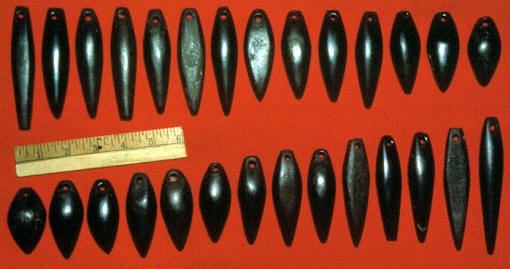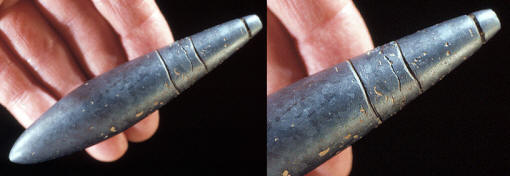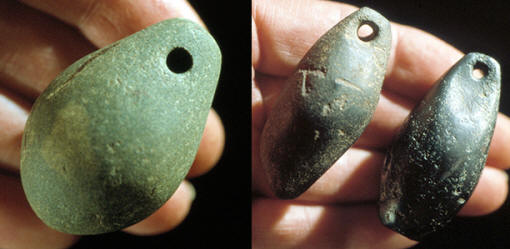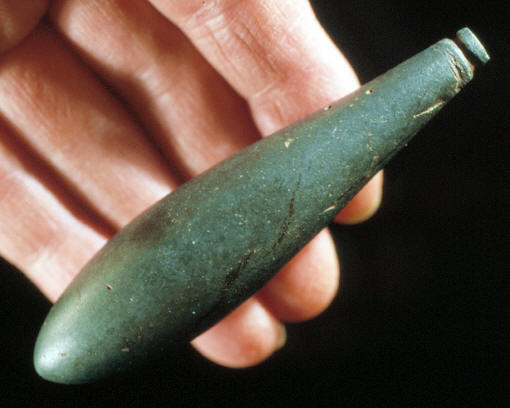|
|
|
The largest number of plummets are found along the Pacific coast in California, in Florida and in the central Mississippi Valley. But they are also reported from many areas east of the Mississippi River, such as the Ohio Valley, Maine, Massachusetts, Connecticut and farther north into New Brunswick and Nova Scotia. Some private collections such as the Whelpley collection which is now a part of the St. Louis Science Center's collection contains 457 plummets. One of the old time collectors, William Waters of Godfrey, Illinois put together the largest collection ever assembled. It contained over 1600 plummets, 80% of which were made of hematite. |
|
|
|
|
Plummets were made of many different materials across the United States. They were made of hematite, granite, limestone, sandstone, schist, shell, slate, galena, steatite, copper, clay, alabaster, calcite, marble, crystal quartz, diorite and pyrite. Approximately two-thirds of the plummets found in the Mississippi Valley were made of hematite. The next most common material used was limestone. It's been suggested that hematite was a popular material because the byproduct from the manufacture of plummets would have been red ochre pigment. Limestone would have produced a white pigment. |
|
|
|
|
Although no one can say for sure exactly how any one particular plummet was used, there are several facts that are known about them. They have been found on village sites located near large bodies of water and they have been found in burials that also contained fishhooks made of shell and copper. At least one Florida plummet was found that was carved with a head of a duck. In 1870 a plowed dry lake bed in Sonoma County California produced many hundreds of plummets. So the archaeological record does show a connection with plummets and water which can mean they have something to do with fishing and hunting water fowl. |
|
|
|
|
Although it's clear that plummets were used in large numbers near large bodies of water it's still not clear how they were used. The most common and most logical theory is that they were used as weights on bola or net-like devices to net or snare waterfowl or on throwing nets for catching fish. In a 1933 Barrett and Gifford reference to the use of California plummets they suggest they were used as weights hung on a Sierra Miwok duck net. Some of the earliest suggested uses for plummets were as drag-line sinkers, fishing-line sinkers, net sinkers, sling-stones, black-jacks, bolas, twine or sinew twisters, spinning weights, netting-weights, weaving-weights, hand-pestles, paint-stones, rubbing-stones, hammers, ear ornaments, simple-pendants, amulets, charm-stones, lucky stones, drum rattles, as true plummets, game stones and in connection with phallic worship. |
|
| CONTINUE ON TO PAGE THREE | |
|
"REFERENCES"
1896, Fowke, Gerard, "Stone Art, (Plummets)" Thirteenth Annual
Report of the Bureau of Ethnology, pp. 110-114. |
|



